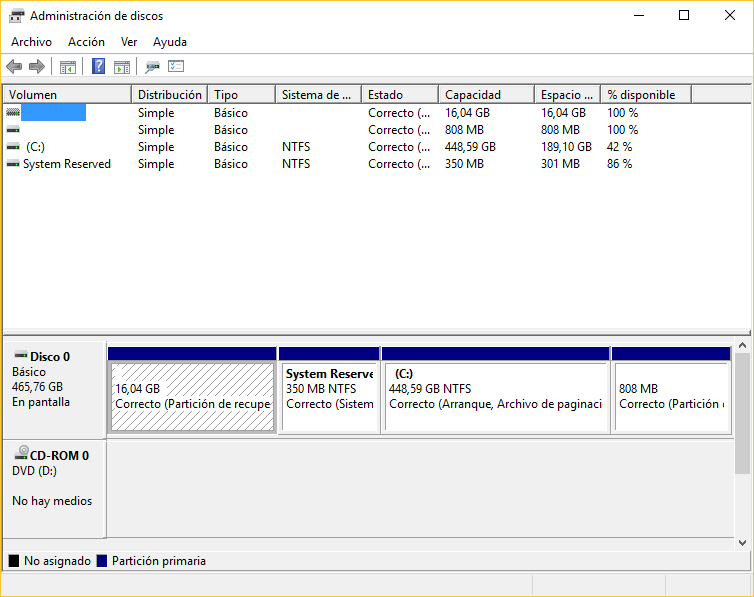Crear Particion De Recuperacion Windows 10
UEFI/GPT-based hard drive partitions. 7 minutes to read.In this articleCreate custom partition layouts for your hard disk drives (HDDs), solid-state drives (SSDs), and other drives when deploying Windows to Unified Extensible Firmware Interface (UEFI)–based devices.Note If you use a custom partition layout on Windows 10 for desktop editions (Home, Pro, Enterprise, and Education), update the push-button recovery script so the recovery tools can recreate the custom partition layout when needed. Partition RequirementsWhen you deploy Windows to a UEFI-based device, you must format the hard drive that includes the Windows partition by using a GUID partition table (GPT) file system. Additional drives may use either the GPT or the master boot record (MBR) file format.A GPT drive may have up to 128 partitions.Each partition can have a maximum of 18 exabytes (18.8 million terabytes) of space. System partitionThe device must contain a system partition. On GPT drives, this is known as the EFI System Partition, or the ESP. This partition is usually stored on the primary hard drive.

The device boots to this partition.The minimum size of this partition is 100 MB, and must be formatted using the FAT32 file format.This partition is managed by the operating system, and should not contain any other files, including Windows RE tools. NoteFor Advanced Format 4K Native drives (4-KB-per-sector) drives, the minimum size is 260 MB, due to a limitation of the FAT32 file format. The minimum partition size of FAT32 drives is calculated as sector size (4KB) x 65527 = 256 MB.Advanced Format 512e drives are not affected by this limitation, because their emulated sector size is 512 bytes.


512 bytes x 65527 = 32 MB, which is less than the 100 MB minimum size for this partition. Microsoft reserved partition (MSR)Beginning in Windows 10, the size of the MSR is 16 MB.Add an MSR to each GPT drive to help with partition management. The MSR is a reserved partition that does not receive a partition ID. It cannot store user data. Other utility partitionsAny other utility partitions not managed by Windows must be located before the Windows, data, and recovery image partitions.
This allows end users to perform actions such as resizing the Windows partition without affecting system utilities.Protect end users from accidentally modifying utility partitions by identifying them using a GPT attribute. This prevents these partitions from appearing in File Explorer.To set partitions as utility partitions - When you are deploying Windows by using the.DiskPart.
tool, use the.attributes volume set GPTATTRIBUTEPLATFORMREQUIRED. command after you create the partition to identify the partition as a utility partition. For more information, see the MSDN topic: PARTITIONINFORMATIONGPT structure(verify that system and utility partitions exist 1. Click.Start., right-click.This PC., and then click.Manage.
The.Computer Management. window opens.2. Click.Disk Management. The list of available drives and partitions appears.3.
Deploy Windows RE. 3 minutes to read.In this articleUse these steps to deploy Windows Recovery Environment (Windows RE) to a new computer, to help end users repair a PC when a system failure occurs. PrerequisitesTo complete this walkthrough, you need the following:. A destination computer that has been configured with a Windows RE tools partition, and optionally, a recovery image partition. For more information, see.
Optional: Customize your recovery media. Blade runner 2049 hindi dubbed movie download. For more information, see.
Optional: Customize your recovery media to include custom tools. For more information, see.Step 1: Deploy Windows RE.Create a new directory in the Windows RE Tools partition, and then copy your custom Windows RE tools image (Winre.wim) to this directory.
Crear Particion De Recuperacion Windows 10 1
The following are examples based on your firmware type:UEFI: mkdir T:RecoveryWindowsRExcopy /h W:WindowsSystem32RecoveryWinre.wim T:RecoveryWindowsREwhere T: is the drive letter of your Windows RE Tools partition.